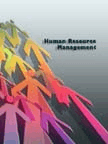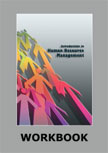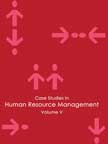Remaking JC Penney's Organizational Culture
|
|
ICMR HOME | Case Studies Collection
Case Details:
Case Code : HROB093
Case Length : 19 Pages
Period : 2004-2007
Pub Date : 2007
Teaching Note : Available
Organization : J.C. Penney, Inc.
Industry : Retailing
Countries : USA
To download Remaking JC Penney's Organizational Culture case study
(Case Code: HROB093) click on the button below, and select the case from the list of available cases:

Price:
For delivery in electronic format: Rs. 400;
For delivery through courier (within India): Rs. 400 + Rs. 25 for Shipping & Handling Charges
» Human Resource and Organization Behavior Case Studies
» HRM Short Case Studies
» View Detailed Pricing Info
» How To Order This Case
» Business Case Studies
» Area Specific Case Studies
» Industry Wise Case Studies
» Company Wise Case Studies

Please note:
This case study was compiled from published sources, and is intended to be used as a basis for class discussion. It is not intended to illustrate either effective or ineffective handling of a management situation. Nor is it a primary information source.
Chat with us

Please leave your feedback

|
|




<< Previous
Excerpts
Background Note
|
The origin of JCP can be traced back to The Golden Rule (TGR), a dry goods and
clothing store, in Kemmerer, Wyoming, set up in 1902 by James Cash Penney
(Penney). TGR was set up in partnership with Penney's employers, merchants
Thomas M. Callahan and William Guy Johnson. In 1907, Penney bought the stakes of
his partners and concentrated on expanding the number of stores. By 1920, TGR
had 312 stores in 26 states. In 1924, the chain of stores was incorporated as
The JC Penney Company. By 1930, the number of JCP stores had reached 1,452 and
the number of employees, called associates, had touched 25,000. The company
crossed the US$1 billion revenue mark in 1951 and the US$2 billion mark by
1964...
|

|
Enter Ullman, Exit Castagna
On October 27, 2004, JCP announced that Ullman would succeed Questrom as
chairman and CEO of JCP on December 1, 2004. The Board Search Committee led
by Vernon Jordan Jr., and assisted by Heidrick & Struggles zeroed in on
Ullman due to his rich domestic and international experience in the retail
industry...
The Need for a Change in Culture
When Ullman joined JCP, he found that the organizational culture was very
formal. It seemed to him that the culture prevalent at JCP had not changed
much from what it had been in its earliest days. The employees referred to
the store managers and other people of the management as 'Mr.', 'Ms.', etc.
and the surnames rather then the first names. The employees also wore
formals; casual wear was not acceptable. Even on Fridays, which are
generally accepted as 'causal wear day', JCP employees were expected to come
to office in formals...
|
|
Changing a Century-Old Culture a Big Challenge
However, analysts felt that the challenge before Ullman was immense.
New blood had to be infused in JCP without the existing employees
being alienated. The organizational culture at Penney had not
changed much since the time of its founder Penney. The culture was
deep-rooted and had been reinforced decade after decade. In 1913,
Penney started a ceremony for loyal employees who embodied JCP's
core values. At this ceremony, Penney had emphasized 'The Penney
Idea' - the motto of JCP also known as HCSC, which stood for Honor,
Confidence, Service, Cooperation... |
Initiatives taken by JCP
Though Ullman had rich experience in the industry, he desisted from introducing
sweeping changes at JCP based on what he thought was right. For the first few
months, he patiently listened to the employees. He also looked outside for
ideas. He talked with people who had led turnarounds in other companies and even
sent a team to International Business Machines Corp (IBM)...
Excerpts Contd...>>
|
|









